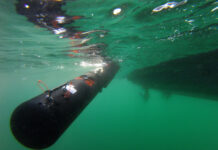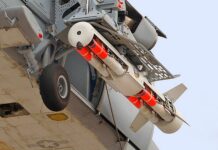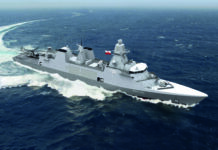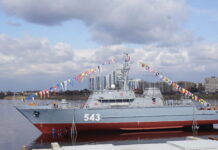Several Western navies are modernising their mine countermeasures capabilities with new, specialised vessels.
Naval mine warfare remains a potent threat in the 21st century. The mine countermeasures (MCM) vessels of many nations are ageing and – in some cases – are in urgent need of replacement. The need to introduce new MCM vessels (MCMVs) is not, however, solely based on aging hulls. MCM concepts of operation are changing. The introduction of new unmanned and autonomous minehunting and mine-neutralising systems requires that future MCMVs need to be configured to store, operate and maintain these off-board systems, whether they are aerial, surface or underwater in nature. In some cases, fleets are also planning to use their MCMVs for secondary missions utilising the same capability set, such as the inspection and security of critical underwater infrastructure (CUI) including pipelines and communications cables. As recent examples demonstrate, modernising MCM capabilities requires careful planning in order to avoid setbacks caused by immature technology or exaggerated expectations. Various approaches to MCMV design are being taken.
United States: Littoral Combat Ship
The US Navy originally planned a modular approach to replacing the Avenger (MCM-1) class MCMVs that were introduced in the late 1980s. Both classes of the multi-mission Littoral Combat Ship (LCS) type were to alternate between MCM, anti-submarine warfare (ASW) and surface warfare by exchanging specialised mission modules depending on the task at hand. This approach was ultimately abandoned. Instead, 15 Independence (LCS-2) class LCS variants will now be permanently dedicated to the MCM mission. Their trimaran hull provides stability during stationary MCM operations whilst a 40 knot top speed and 4,300 NM range enhance responsiveness. A 57 mm deck gun and CIWS provide self-defence capability. Berthing is available for 35 MCM mission specialists. A 1,400 m² reconfigurable mission bay can accommodate mission systems including unmanned underwater vehicles (UUV), unmanned surface vessels (USV), modular sonar and sensor packages, as well as control consoles and maintenance equipment for the MCM components.
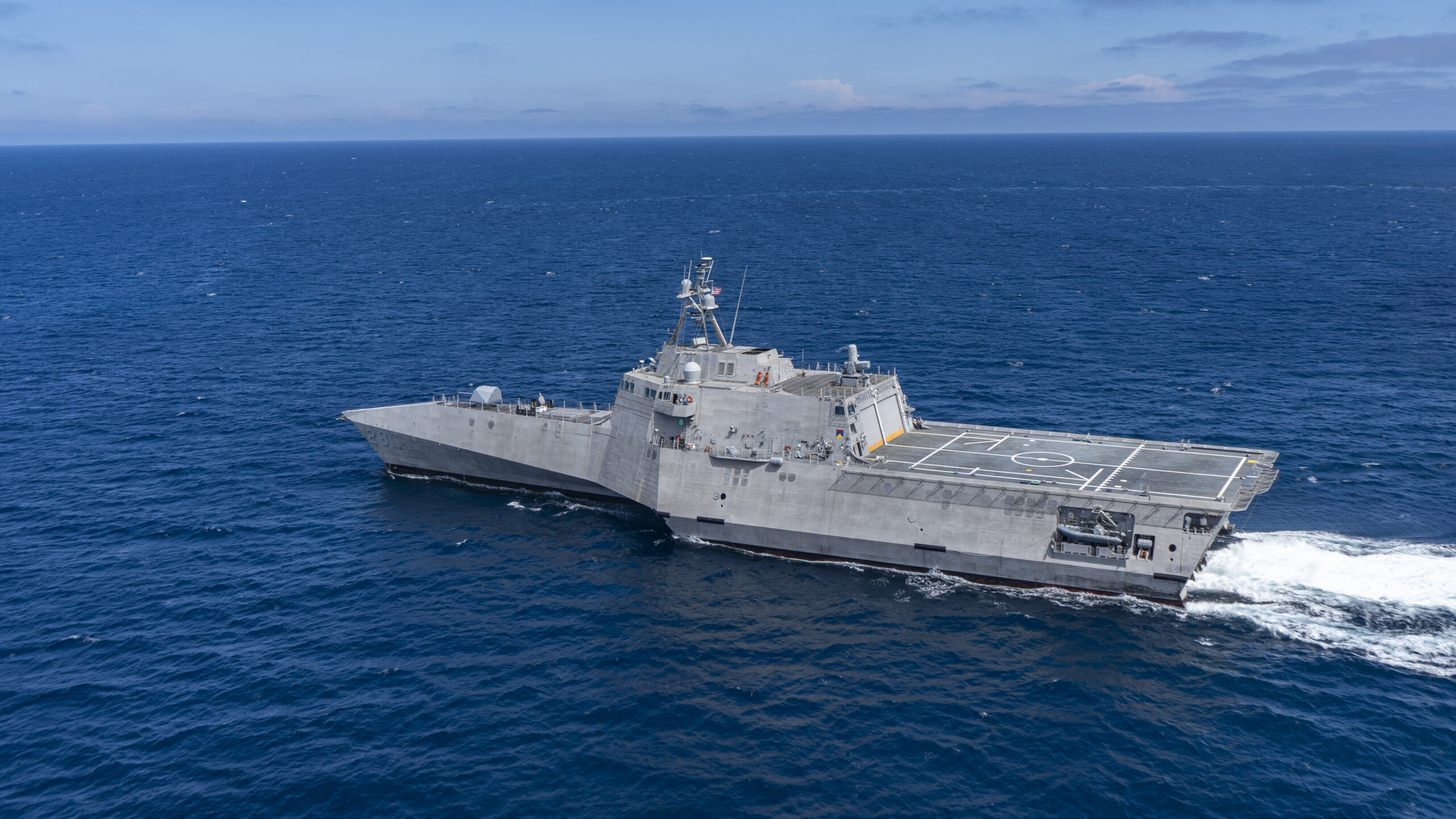
Credit: US Navy
Following years of delayed development, the US Navy has assembled a functional expeditionary MCM Mission Package (MCM MP). This consists of various integrated sensors and mine neutralisation systems. These will be deployed by manned MH-60S helicopters and autonomous, 11 metre USVs to perform the full MCM spectrum of hunt, neutralise and sweep. In contrast to the wooden-hulled, fibreglass-coated Avenger class, which enters the minefield, the LCS will maintain a standoff range of at least 10 miles, deploying aircraft and unmanned systems with no risk to human operators or the vessel. Command and control of the individual MCM systems will be executed from the ship, with multiple systems able to be directed simultaneously. In this way the LCS acts as a ‘mothership’ for the deployable minehunting and mine-neutralisation subsystems which form the actual MCM capability. “We don’t want to put the man in the minefield, we want to put the sensor in the minefield,” said Brig.Gen Marcus Annibale, director of expeditionary warfare and resource sponsor for mine warfare, in May 2024.
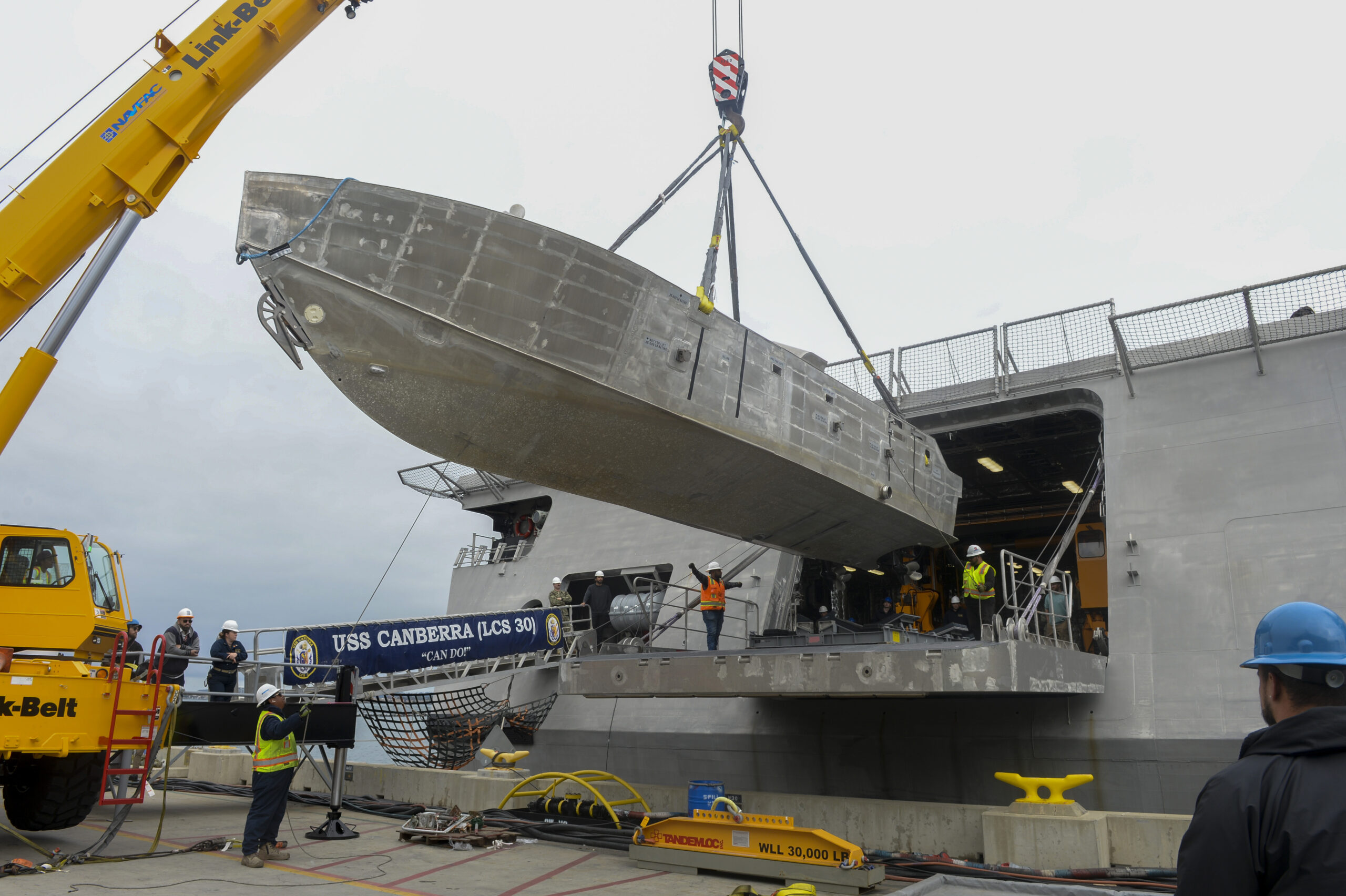
Credit: US Navy
The MCM MP achieved initial operating capability (IOC) in May 2023. The first operational MCM MP embarked in USS Canberra (LCS-30) in April 2024. The crew is currently training to operate and maintain all components as part of their pre-deployment workup. Continuous forward deployments of MCM MP-equipped littoral combat ships to Bahrain and Japan are due to begin in 2025 and 2027, respectively.
United Kingdom: RFA Stirling Castle
The United Kingdom’s Mine Hunting Capability (MHC) programme aims to completely transition the MCM mission to unmanned systems by 2033. However, the autonomous boats, underwater vehicles and towed sensors executing the immediate MCM mission will still need a human-staffed mothership as a base of operation. Accordingly, the British Royal Navy is planning to acquire four of these vessels to replace its legacy MCMVs. In early 2023 the UK purchased a 97 metre long, 5,800 tonne offshore support vessel (OSV) as its first replacement platform. The ship, built in 2013 to strictly commercial standards, will be operated by the civilian-manned Royal Fleet Auxiliary (RFA) and has been renamed RFA Stirling Castle. It formally joined the fleet in April 2024.
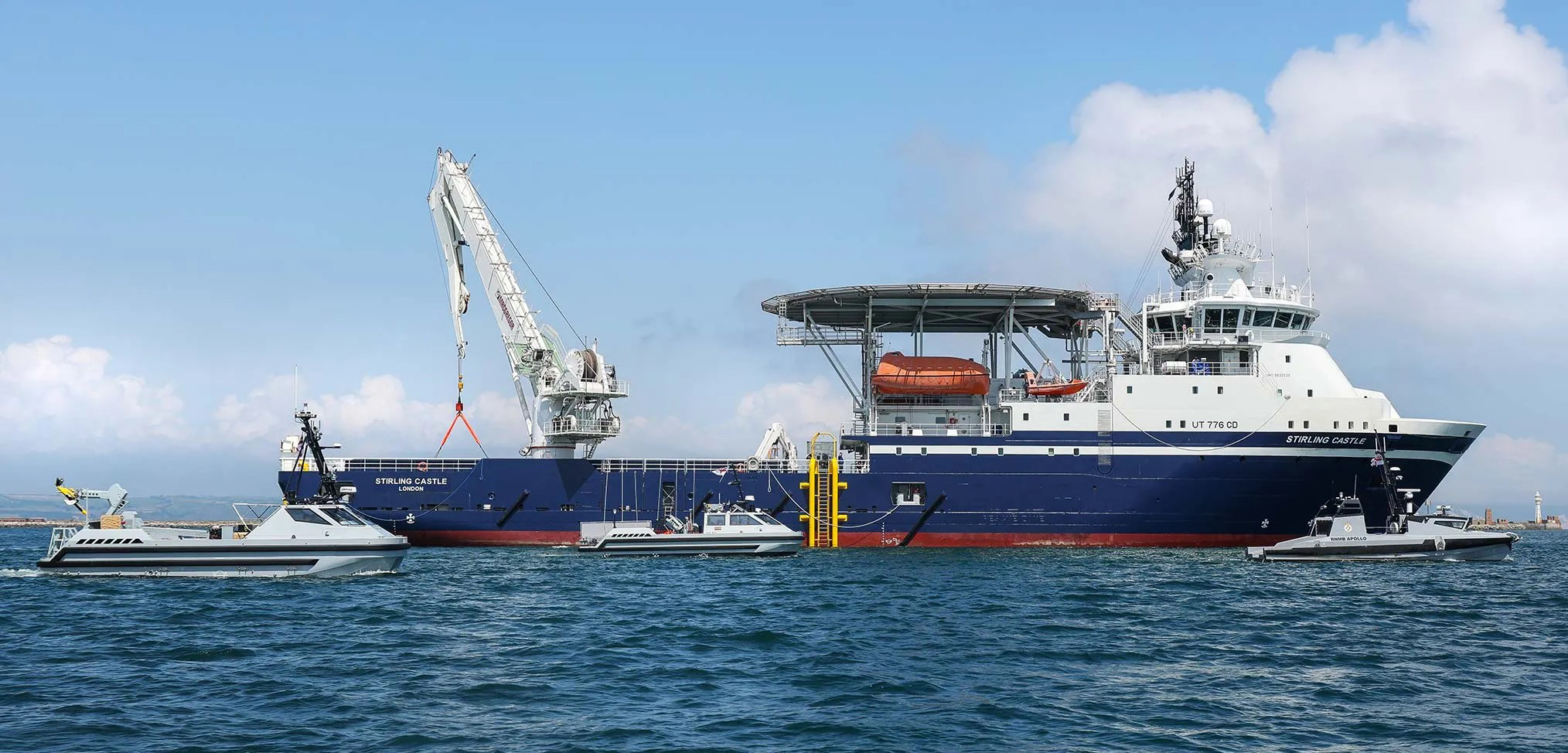
Credit: Crown Copyright 2023
This approach has two distinct advantages over developing and acquiring clean-sheet MCMVs. One is cost. The purchase of RFA Stirling Castle cost GBP 40 million; much lower than for a LCS or a dedicated MCMV. The other is speed of acquisition. The Royal Navy’s new vessel was on the market for immediate acquisition, and took little more than a year to be declared mission ready; much less time than new design and construction.
However, having gained experience of evaluating and operating the RFA Stirling Castle, the RN’s leadership is firmly advocating purpose built survivable but non-complex warships rather than commercial-design auxiliaries to fulfil the remainder of its MCMV requirement. Primary arguments in favour of a bespoke design include its higher survivability level and greater damage control capabilities; its organic military communication, command and control systems and sensors; and its more capable self-defence systems. Additional concerns centre on the expectation that the unmanned MCM systems currently under development will be larger, more sophisticated, and therefore more demanding than those currently in operation or in testing. RFA Stirling Castle’s 600 m² working deck is already considered too small for these future MCM systems. The ship’s 10 tonne capacity crane– currently the ship’s only launch and recovery system (LARS) – is another inadequacy given the expectation that future MCM operations will require the simultaneous launch of multiple off-board systems (including USVs that will likely be larger and heavier than those currently in service or testing).
As it stands today, the MHC program is divided into three phases, with the ongoing Block 1 centred on Stirling Castle and new autonomous minehunting USVs. Block 2 is to be incrementally delivered beginning in 2026. The RN hopes this will include three MCMV motherships designed and built to military standards. Block 3 will be initiated circa 2034, with requirements yet to be developed. The actual course of the MHC programme will inevitably depend on future funding. With other, high-profile acquisition programmes underway, the MCM mission could ultimately be relegated to a lower priority on the assumption that converted OSVs will suffice.
Belgium and the Netherlands: rMCM
The furthest advanced European MCM programme – titled rMCM – is delivering six replacement MCMVs (rMCM) to each of the Belgian and Royal Netherlands (RNLN) navies as successors to the aging ‘Tripartite’ class minehunters built under a previous collaborative project that also included France. The Belgian ships are designated the ‘City’ Class, while the RNLN units form the Vlissingen class. The acquisition contract was awarded in 2019 to Belgium Naval & Robotics, a consortium of Naval Group and ECA Group (now Exail). Naval Group’s responsibilities include ship design, system integration and testing, while Exail supplies the robotic systems which will operate from the vessels. Kership, a joint venture between Naval Group and Piriou, is the actual builder of the MCMVs as a subcontractor.

Credit: Netherlands Ministry of Defence
The 82 metre MCMVs displace 2,800 tonnes and can accommodate 63 people, including both the ship’s crew and mission specialists. Their force protection capabilities include a 40 mm Bofors gun capable of engaging surface and airborne targets; cybersecurity has also been designed in from the beginning. The ships feature very low acoustic, electrical and magnetic signatures, and are built to withstand mine detonation. While this could permit their entering a minefield, the actual concept of operations calls for the vessels to function as motherships. As such, minehunting, neutralisation and sweeping will be conducted at standoff range by a suite of robotic systems including 12 metre, 18 tonne USVs, UUVs, remotely operated vehicles (ROVs) and a UMS Skeldar V200 UAV. LARS capabilities include a 15 tonne and a 3 tonne crane as well as two side gantries with floating docks for USVs and manned boats.
Keel-laying of the programme’s first vessel – the Belgian Oostende – took place in November 2021, with launch in March 2023 preceding the commencement of builder’s trials in July 2024. She was followed into the water by the Dutch first-in class – HMNLS Vlissingen – in October 2023. Commissioning of each partner navy’s lead ship is planned for 2025, with subsequent units entering service yearly through to 2030.
In October 2022 France confirmed that it planned to base its new ‘bâtiments de guerre des mines’ (BGDM) on the rMCM mothership design. Since France plans to utilise a different family of robotic vehicles, some design adjustments will need to be made. Plans call for a total of six BGDMs to be in service by 2035.
Italy: New Generation Minehunter/Coastal (NGM/C)
The Italian Navy is pursuing a dual-capable vessel for MCM and coastal seabed surveillance/CUI protection. The contract for the first five NGM/C units was awarded in July 2024 to a partnership of Intermarine (which will design and build the vessel) and Leonardo (which will provide mission systems). The first vessel is expected to enter service in 2028. The contract includes an option for additional ships.
The 2024 contract award was preceded by a three year preliminary risk reduction study and project definition phase. According to the Italian Ministry of Defence, the New Generation Minehunters will feature highly integrated and automated mission systems, and represent one of the most technologically advanced MCM concepts in the world. The SADOC 4 multi-domain command and control system – including integrated management of unmanned vehicles – will be organic to the platform. Sensors will include advanced radar and electro-optical systems as well as broadband sonar with mine detection and classification capabilities. The shock resistant fibreglass hull will have a low magnetic and acoustic signature.
While the operating concept calls for off-board autonomous assets to act as force multipliers, the ships will be configured to operate inside the minefield. “Maritime unmanned systems will be the future, taking the man out of the minefield,” said Rear Admiral Gianguido Manganaro, head of the Italian Navy’s MCM forces command MARICODRAG, in June 2023. “However the Italian Navy believes we are still in a transition phase where the legacy capability cannot be completely abandoned and lost. [We are] looking to a concept of operations based on a very modern and flexible MCM platform able to safely approach a minefield and deploy unmanned system wherever and whenever is necessary”. He added, ‘In our job we do not know when we enter a minefield, therefore the new MCMV will have to feature the same shock resistance and underwater low signature of legacy MCMVs …making a massive use on unmanned systems in a multi-domain environment.”
The initial tranche of five vessels will be 63 metres long with a displacement of around 1,300 tonnes. The Italian Navy’s current planning also calls for procuring larger, expeditionary MCMVs once the five coastal MCMVs are delivered. These vessels would be capable of extended long-range deployments in support of the blue-water fleet or allied operations. They would likely be larger, in the 80 metre range, to enhance endurance and to accommodate a greater number or variety of mission systems including autonomous systems, (and the associated larger, specialist crews). Specific timelines for the second tranche of the NGM family have not yet been published, although the overall requirement for both coastal and expeditionary MCMVs has been provisionally pegged at 12 units.
Other selected MCM modernisation initiatives
While some nations are putting their current MCMVs through upgrade or service-life extension programmes, a few others are also acquiring new vessels using various approaches.
Finland: In February 2022 the Finnish armed forces issued a tender for new MCMVs to replace the nation’s 1970s-era 20 tonne Kiiski class minesweepers. The new MCMVs will feature crew accommodation but will also be configured for optional autonomous or remotely-controlled operation. They will be outfitted with new integrated systems capable of influence sweeping for acoustic, magnetic, and electric mines as well as legacy equipment (salvaged from retiring vessels) for mechanical sweeping of contact mines. Given the specific operating environment of Finland’s coastal waterways, the requirement remains for small vessels of up to 24 metres in length. According to the Finnish Ministry of Defence, implementation of the acquisition has been postponed due to budgetary constraints. While the first round of negotiations with industry was originally planned for summer of 2022, procurement is now slated to continue in 2026 when a new call for tenders will include more detailed criteria.

Credit: Swedish Ministry of Defence
The new MCMVs are expected to conduct lower-end MCM operations, leaving more complex operations to the 52 metre, 650 tonne Kataanpää class. Derived from the Italian Navy’s Lerici class, they were delivered by Intermarine from 2012 to 2016 and are likely to serve into the 2040s. These larger vessels have hull-mounted sensors and deploy autonomous underwater vehicles and remotely operated vehicles, enabling them to operate from within and outside the mined zone. They are capable of operating in ice.
Poland: The Polish Navy is taking a traditional approach, expanding its MCM capabilities by acquiring three additional ‘Kormoran II’ class ships under a 2022 contract with Remontowa Shipbuilding. The navy already operates three ships of the class, which were commissioned between 2017 and 2023. The new vessels are to be delivered between 2026 and 2027.

Credit: Remontowa Shipbuilding
The 58.5 metre, 830 tonne displacement ‘Kormoran IIs’ are Poland’s most modern MCMVs. They feature non-magnetic steel hulls rather than fibreglass or composite hulls; this has the advantage of lower cost and greater resistance to fire. The hull and superstructure are designed to reduce radar signature as well. A bow thruster enhances manoeuvrability, enhancing safety when transiting mined waters. Self-defence capabilities include a 35 mm Oerlikon gun, Grom anti-aircraft missiles, and three machine gun mounts.
MCM operations are conducted via the state-of-the-art Ship Combat Tactical-Minehunter (SCOT-M) combat management system developed at the Maritime Technology Centre of the University of Szczecin. Mission systems include a hull-mounted SHL-101/TM sonar, as well as deployable Kongsberg Hugin 1000 AUVs, Teledyne Marine Gavia AUVs with side-scan sonar, and Kraken Robotics Katfish-180 Synthetic Aperture Sonar towfish. Mine destruction can be carried out by divers, or by deploying ROVs and self-propelled explosives. An on-board hyperbaric chamber is carried to support EOD divers.
Australia: Rather than pursue a clean-sheet, dedicated MCMV design or rely on a converted commercial platform, Australia had seemingly chosen a middle path. In 2021 the government announced that the new MCMVs to be procured under the SEA 1905 programme (Tranche 2) would be derived from the Royal Australian Navy’s (RAN) new Arafura class offshore patrol vessels (OPV)s; the same derivative platform would also serve for hydrographic missions. The 80-metre, 1700 tonne OPV’s 4,000 NM range would serve well in the expansive waters surrounding the nation. However, the truncation of the Arafura programme – already declared a ‘project of concern’ in October 2023 following serious delays – as a result of the country’s 2024 Surface Fleet Review (SFR) and subsequent cancellation of SEA 1905 has left the future direction of travel unclear. The remaining Arafura class OPVs have, however, been left looking for a role as a result of the SFR and it is not inconceivable they could yet be adapted for MCM mothership duties in due course.
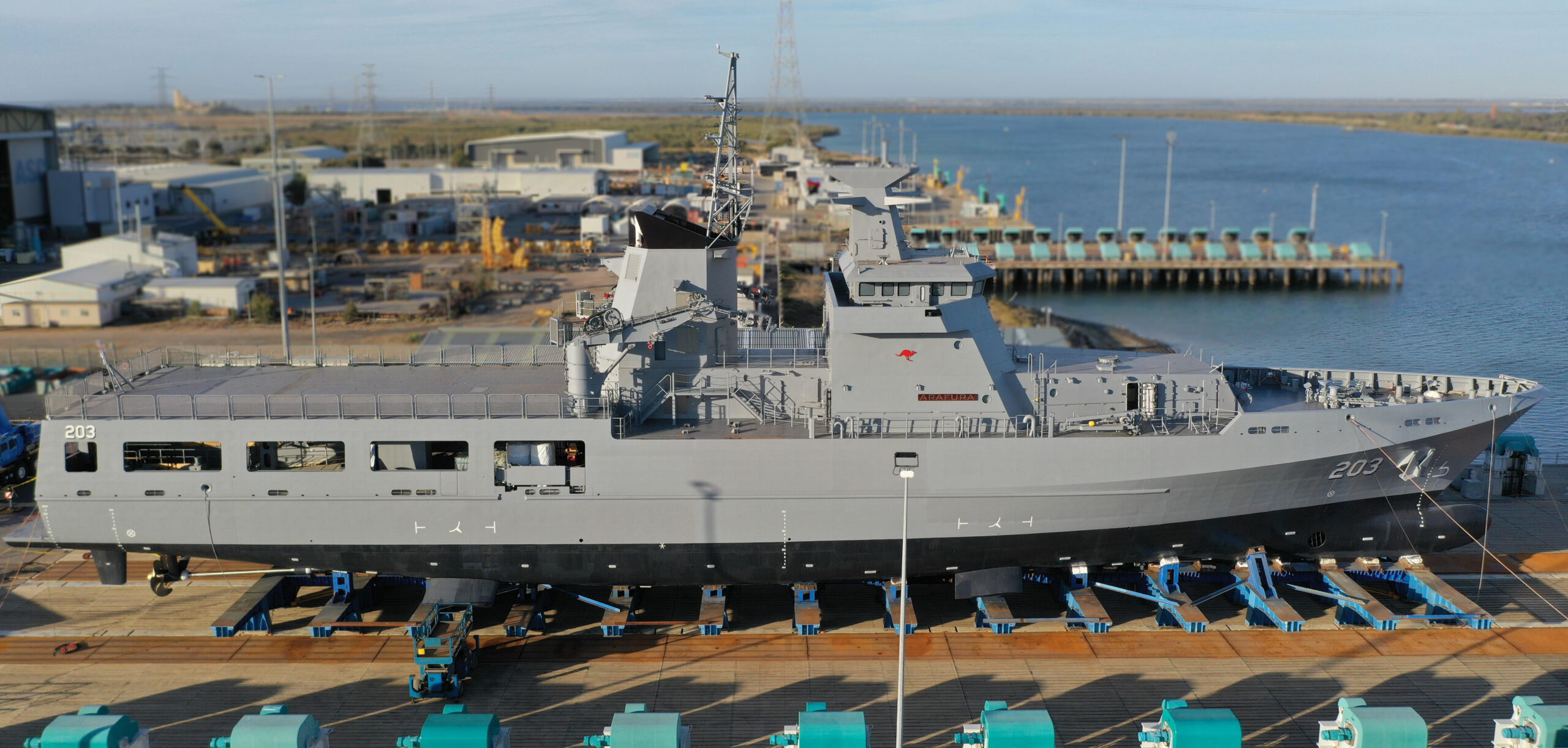
Credit: Australian Ministry of Defence
Advantage unmanned
While some navies continue to plan for all scenarios by procuring MCMVs capable of entering the minefield, almost all services are placing the primary emphasis on remotely controlled or autonomous minehunting, neutralisation and sweeping systems. This has advantages beyond risk reduction to human operators. Unmanned boats can move more quickly, and a single mothership can deploy multiple boats or UUVs simultaneously, potentially clearing a minefield in less time. The modular character of the unmanned MCM systems permits their deployment from a variety of vessels or even from shore, permitting nations to adapt their MCM strategy to national requirements and budgets, or to temporarily operate from vessels of opportunity if no MCMV is available. Overall, dedicated MCMVs – with hull mounted sensors, optimised LARS, and organic command and control centres – remain the best choice as platforms for deploying these smaller MCM systems. Given current developments in artificial intelligence and the trend toward autonomous aerial, ground and sea systems, the question now becomes: when will the first optionally manned, full-sized mine-warfare mothership be developed?
Sidney E. Dean





